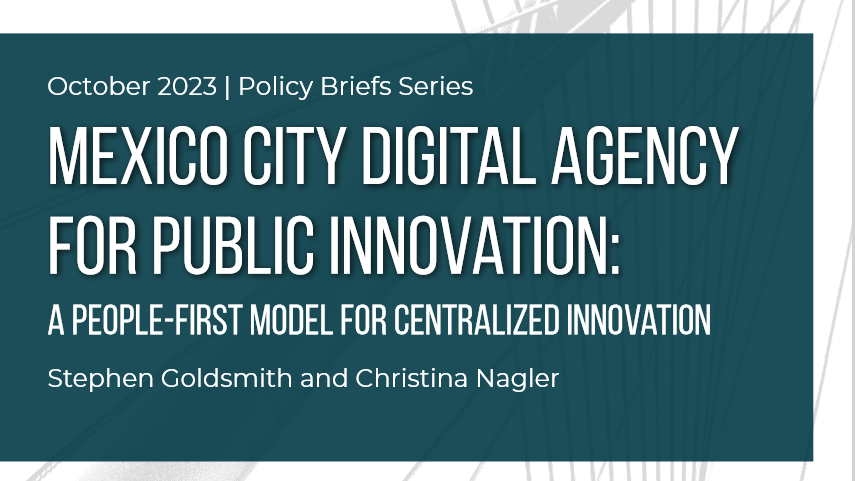- May 12, 2015
- Civic Engagement
The data-smart revolution in cities is often about leveraging data from new technologies: sensors gather information on sound and pollution, GPS allows cities to better understand traffic flows, and online services produce a constant stream of data on the demand for government offerings. In the flurry of new technologies, the good old-fashioned survey can be easily overlooked. But the perception of citizens is a crucial measure of government’s performance. Kansas City, MO, has taken the survey off the shelf, integrating rolling surveys of citizens with administrative data to improve their understanding of the city’s performance.
Kansas City initiated a quarterly Citizen Survey in 2000, administered to a random sample of 2,500 citizens. But for years it served the same purpose surveys do in many cities: a contractor would conduct the survey, analyze and aggregate the data, and produce a report for the city to review and share with the public.
In 2011, with the arrival of Mayor Sly James, Kansas City committed to a data-driven approach to performance management. The Office of Performance Management (OPM), founded in 2009 and reporting to the city manager, was tasked with overseeing metrics-drive process improvements across the city. As part of this effort, OPM turned their attention to the Citizen Survey and quickly realized that its full potential was not yet explored.
“We had some staff members and departments who dismissed the findings of the survey altogether because they didn’t know where the questions came from, or they didn’t know what the results were trying to tell them,” the team said. With input from across the city, OPM oversaw a comprehensive rewrite of the survey instrument to align with departmental functions. With better questions, tailored to align with specific units and their functions, the outcomes are now taken seriously by staff throughout the city and used in daily operations.
City Prioritization and Allocation: The Kansas City survey asks citizens to note their top city priorities across a number of different categories including infrastructure, parks and recreation, and neighborhood services. By asking prioritization questions, the city ensures that they do not misunderstand citizen feedback—“These are not just inferred priorities, they’re explicit.” And the citizens’ feedback matters: priorities expressed in the surveys inform the allocation of city budgets and the prioritization of government projects. The department of Parks and Recreation has taken this seriously: while they have many responsibilities, their greatest efforts go towards youth programs and tree maintenance—the consistent top priorities indicated by residents.
Process Improvements: The Citizen Survey has been integrated into all aspects of performance management and informs ongoing process improvements. It is part of weekly internal and monthly external meetings that report on the city’s performance: internal meetings are held with department directors across the government, while citywide meetings are broadcast and webcast live and live-tweeted by staff. “It went from something that was for an annual report to something that we’re constantly doing data analysis on and integrating into weekly and monthly meetings, lining it up with our service level data.” The Citizen Survey is seen as the “outcome data” of the city’s performance: citizen input is used to benchmark success, and through citizen response, officials can learn whether they are meeting their goals.
The Citizen’s Perspective: In addition to informing prioritization, resource allocation, and process improvements, the survey also helps the city learn when it needs to improve its communications. A survey goes out to each 311 user—whether they used 311 online, in person, or by phone—with questions that match the Citizen Survey. The city has repeatedly seen high levels of satisfaction from 311 users on the same issues where there is low satisfaction from the general public: for instance, a person who notified the city of a streetlight outage might be satisfied with the time it took for the city to do the repair, but general public’s impression of the city’s performance remains low. The city has learned to address these gaps through improved communication, by drawing public attention to the city’s daily efforts at maintenance and fulfillment of service requests.
Measuring Impact: The city has also used to the Citizen Survey to measure the success of new initiatives. Historically, the survey has shown dissatisfaction around snow removal. With a big snowstorm coming in 2013, they ramped up communications, engaging with citizens through digital platforms to address where and when city snow removal was taking place. The next Citizen Survey went out just a few weeks later, and bore witness to the initiative’s success: the city saw a dramatic drop in snow-related dissatisfaction in the survey, confirming the city’s expanded communication strategy.
The Citizen Survey is not a new or expensive technology. With an annual survey budget of around $60,000 and an Office of Performance Management staff of only four people, Kansas City has been able to transform the classic tool for gathering public feedback into a fully integrated part of the city’s data-driven performance management process. Through the smart integration of data from surveys with administrative systems and internal performance measures, Kansas City is ensuring that citizens’ priorities are reflected at all levels of government.
Today, the survey is part of the day-to-day management of the city, driving large-scale allocation decisions as well as small process improvements, helping the city ensure that it is meeting the needs—and increasing the positive perception—of constituents.
What is Kansas City’s advice to other cities that are looking to integrate public feedback into performance management? Don’t overlook the traditional tools, and never shy away from negative feedback—it can provide the most important opportunities for learning and improvement.
Correction: An earlier version of the story incorrectly noted that the Office of Performance Management (OPM) was founded in 2011 and reported to the mayor. OPM was founded in 2009 and reports to the city manager.






